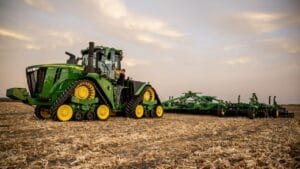An era of swift decline for fossil-fueled vehicles is glaringly apparent. As auto manufacturers and tech innovators race to capture a rapidly shifting landscape, a handful of global companies are not merely adapting but actively reshaping electrification and autonomous technology. This evolution is not limited to fancy sedans weaving through metropolitan arteries—farm fields, marine corridors, logistics hubs, and even underwater research platforms now find themselves amid this technological churn.
ABB: Charging Toward Uncharted Avenues
With one million chargers sold globally, ABB has carved its niche as an electric vehicle (EV) charging behemoth rather than contenting itself with incremental improvements. Innovations like the ultra-fast Terra 360 charger—capable of delivering a full charge in less than fifteen minutes—have become something akin to folklore in EV circles. ABB’s Terra series does more than refill batteries: it signals a pivot toward vehicle-to-grid interfaces where cars feed surplus energy back into city grids. Whenever conversations about emissions flicker across boardroom tables or government budgets, ABB’s influence tends toward being the elephant in the room no one dares ignore.
Oddly enough, ABB integrates sustainability without sacrificing velocity; its emphasis on speed sometimes overshadows equally substantial strides made toward digital grid management—a subtle undertone for keen observers.
Intel (Mobileye): Algorithms over Asphalt
Discussion around semiconductors rarely captures mainstream attention unless chip shortages rear their heads on news tickers. Yet Intel’s legacy branches deftly into EVs through Mobileye—a unit specializing in computer vision systems designed for self-driving applications. The OLEA U310 SoC platform blends AI processing horsepower with control modules capable of orchestrating entire powertrain operations efficiently.
Used by automakers seeking cost discipline without skimping on sophisticated intelligence frameworks, these platforms drive adoption of advanced driver assistance systems (ADAS) as much as they facilitate true hands-off autonomy. Perhaps it should be mentioned that Intel’s support for open standards introduces just enough unpredictability that competitors often chase blueprints which seemingly shift overnight—a curious move or simply strategic ambiguity?
Bullwork Mobility: Agriculture Without Idle Hands
Out beyond city limits where rows run long under satellite watches, Bullwork Mobility throws tradition off-balance with AI/ML-augmented farm machinery designed to operate autonomously. Their smart farming vehicles blur lines between robotics and classic agricultural equipment by patrolling fields unassisted—applying precision irrigation or soil diagnostics while farmers consult dashboards from air-conditioned cab offices instead.
Admittedly there are skeptics who wager that machines lack intuition honed over generations; however, neuroevolution-based algorithms keep learning from rare crop blights or flare-ups so future deployments might surprise doubters altogether.
Occasionally Bullwork steps past dry land ambitions straight into integrated drone monitoring platforms—or perhaps they’ve only hinted at such capability in marketing materials thus far.
General Motors (Super Cruise): Legacy Meets Leapfrog
When discussing autonomy within familiar Detroit frameworks General Motors commands attention with Super Cruise technology embedded into several high-profile models like Cadillac Escalade—the system handles lane-keeping and highway navigation under tightly controlled conditions but puts hands back on wheels when ambiguity rises above comfort thresholds.
For some purists among engineers this partial automation might seem anticlimactic; paradoxically though GM’s approach cultivates trust among cautious consumers disquieted by all-or-nothing robot chauffeurs reigning over family road trips. More significantly GM pursues battery integration strategies—including Ultium battery architecture—that render certain manufacturing bottlenecks obsolete practically overnight.
Just last quarter someone inside GM hinted at integrating bidirectional charging across most new models—but confirmation wavers between official press releases and speculative tweets.
Ribbit: Delivery From Above…Or Below?
Conventional wisdom dictates ground-based vehicles should dominate logistical revolutions; Ribbit prefers otherwise—they deploy pilotless delivery planes skirting urban congestion entirely by leaping overhead traffic snarls or rain-flooded roadsides. Curiously their early research suggested unmanned aquatic craft would arrive first on market shelves due to regulatory fluidity regarding airspace management versus maritime law—but commercial focus drifted skyward sooner than expected.
Even so Ribbit maintains conceptual prototypes that could redefine coastal supply lines once policy tides turn friendlier—they haven’t quite abandoned those prototypes behind hangar doors yet.
From hyperlocal data-driven tractors hushing quiet rural dawns to gigawatt-scale DC quick chargers humming beneath solar canopies outside pie shops off lonely interstates—the electrified future lurches forward unevenly but inexorably nonetheless. Some companies thrive through brute innovation while others glide along adaptive regulatory currents or exploit neglected corridors altogether.
Catch-as-catch-can may feel like an odd idiom here; still—few would dispute whoever manages this ragged relay fastest might just set tomorrow’s pace for everyone else trudging along behind.











